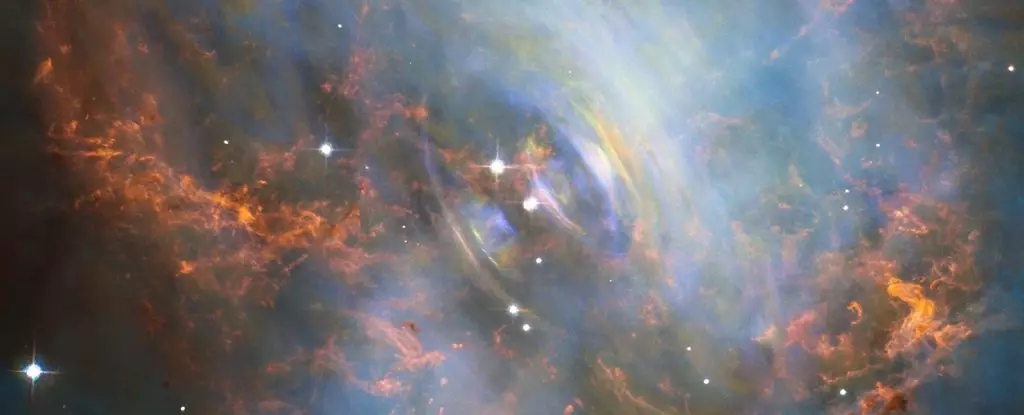In the vast expanse of the universe, radio signals occasionally pierce through the darkness, representing the remnants of cosmic explosions. One such intriguing source is the Crab Pulsar, a neutron star located roughly 6,200 light-years from Earth within the remnants of a supernova that made its presence known in 1054 CE. The pulsar emits distinct radio pulses, but among these, a particularly perplexing feature has captured the attention of astronomers: the zebra pattern. This peculiar signature, which resembles the sharp stripes of a zebra when plotted, has sparked curiosity and led to ongoing investigations aimed at uncovering its origins.
Discovered in the 1960s, the Crab Pulsar was the first of its kind to be associated with a supernova, and since its inception into astronomical records, it has continued to baffle scientists. The zebra pattern, identified much later in 2007, stands out as a unique emission only observed in this celestial body. While the main pulse of the pulsar remains consistent with common characteristics of neutron stars, the high-frequency interpulse presents an anomaly. Ranging between 5 and 30 gigahertz, these frequencies are reminiscent of those found in commonplace devices like microwave ovens, yet their cosmic implications appear extraordinary.
The emergence of this unusual pattern has not merely been academic speculation; it represents a convergence of theoretical physics and empirical observation. Mikhail Medvedev, a theoretical astrophysicist from the University of Kansas, has dedicated his efforts to demystifying this phenomenon. Drawing upon extensive observational data accumulated over decades, he postulated that the zebra pattern originates from an interference phenomenon associated with light’s interaction with differing plasma densities in the pulsar’s magnetosphere.
Medvedev’s hypothesis converges on the principles of wave optics. When electromagnetic waves traverse an obstruction, their behavior deviates from straightforward propagation; instead, they exhibit intricate patterns due to interference. The concept of constructive and destructive interference becomes pivotal in understanding how the zebra-like stripes form. High-density plasma regions affect low and high frequencies differently, resulting in distinctive shadow patterns unmistakably linked to the pulsar’s unique emissions.
As radio waves escape the pulsar, they encounter varying densities of plasma shaped by the neutron star’s magnetic field, which in turn influences how these waves propagate. Medvedev’s wave optics model successfully mirrored observational data and clarified aspects of pulsar emissions previously shrouded in uncertainty. Thus, the zebras’ stripes symbolize not only a cosmic quirk but potentially a pioneering mechanism for gauging plasma density in extreme astrophysical environments.
The implications of Medvedev’s work extend beyond elucidating the zebra pattern in the Crab Pulsar; they could transform how we approach the study of pulsars and similar celestial phenomena. By establishing a method for interpreting diffraction patterns within magnetospheres, a new methodological framework may arise for understanding other neutron stars. While the Crab Pulsar is unique—young and energetically vigorous—there exists a population of pulsars with comparable traits that could yield further insights into our understanding of cosmic events.
Looking ahead, the potential to apply this newfound model is promising. Already, astronomers are aware of several binary pulsars that can serve as test beds for Medvedev’s findings. With its wide-reaching applications, his model might soon provide deeper insights into the nature of neutron stars, their magnetospheres, and the perplexing behaviors resulting from interactions with plasma.
The study of the Crab Pulsar and its eccentric zebra pattern exemplifies the intersection of observational astronomy and theoretical physics. As scientists continue to probe the depths of the universe, each pulsar offers a narrative, weaving together the fabric of cosmic understanding. Medvedev’s insights into diffraction patterns could herald a new chapter in astrophysics, not only illuminating the mysteries of the Crab Pulsar but perhaps setting precedent for our exploratory efforts in the expansive universe. The ongoing saga of the zebra pattern is only beginning, with the potential for even more revelations as we strive to decode the language of the cosmos.

